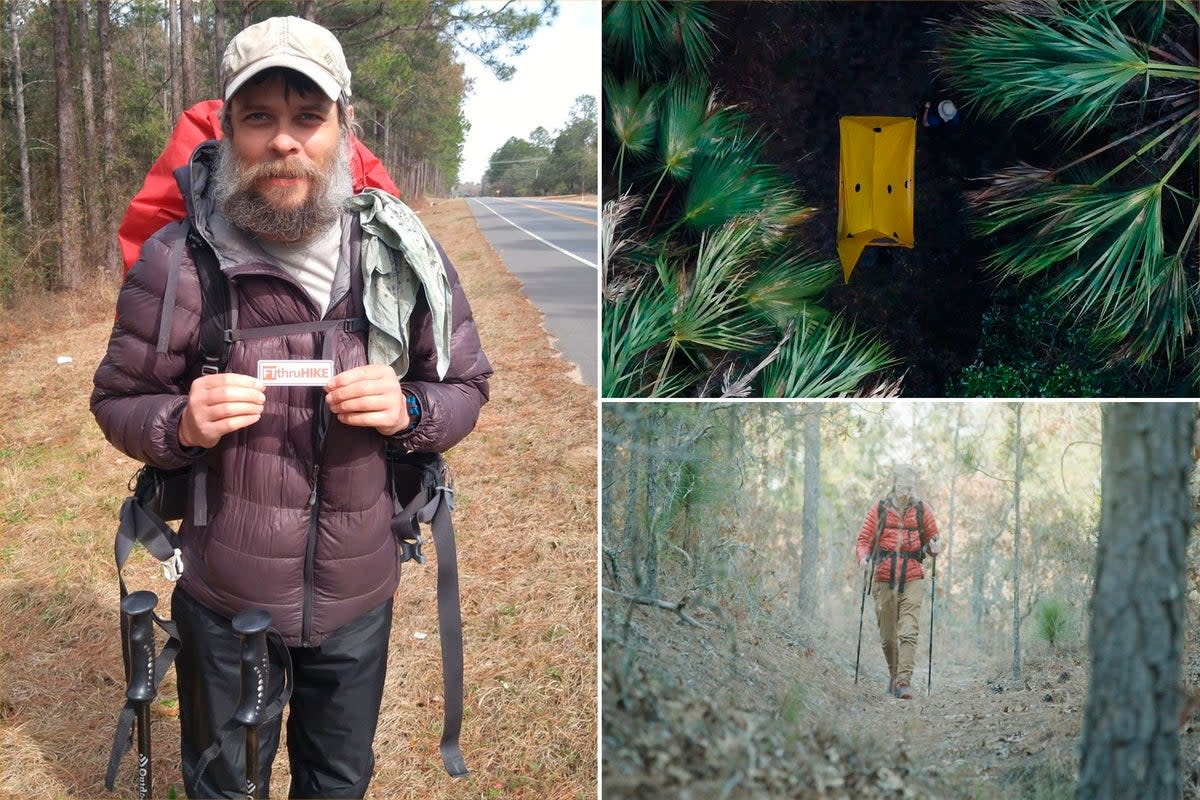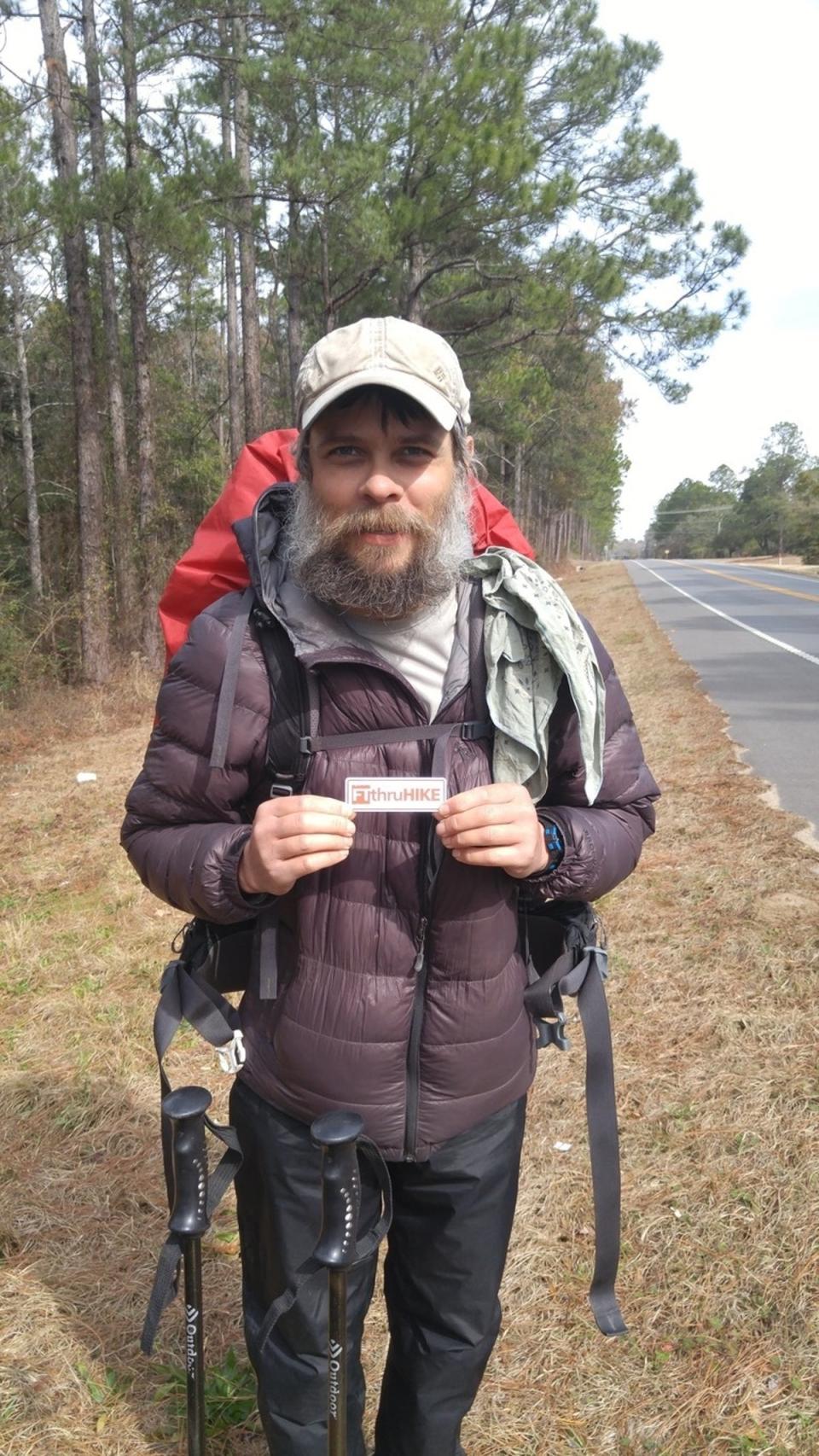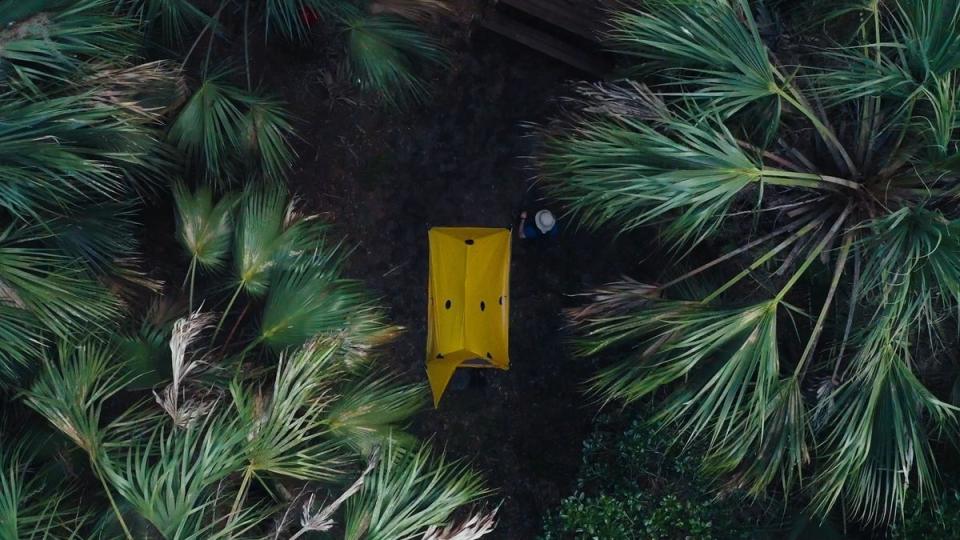The dead hiker went by Mostly Harmless. The search to ID him was anything but

He went, it seems most likely, in search of what they call “trail magic.”
The term is well known in the hiking community, its definition inherently and inarguably subjective. But the feeling, the lure, the mystique of the Appalachian Trail – A.T. to the initiated – brings thousands every year to the wilds of the East Coast. The trail’s nonprofit conservancy takes a stab at defining the allure: “Experiencing something rare, extraordinary, or inspiring in nature. Encountering unexpected acts of generosity that restore one’s faith in humanity.”
Whatever the meaning of that ethereal feeling, plenty of people seem to have experienced it through their interactions with a hiker many knew as Mostly Harmless between 2017 and 2018. Just as there is trail magic, there are trail names; ‘Mostly Harmless’ was the one by which the kind-eyed hiker often introduced himself. He offered few personal details and was of indeterminate age; no one seemed to know his real identity.
When his body was discovered, in the summer of 2018, the depths of his efforts for anonymity became apparent. The hiker had no identification, phone or wallet. Despite reserves of food and cash, he was found emaciated in a tent just a few miles from an interstate. The body was only identified as Mostly Harmless after the unlikely union of law enforcement, online amateur sleuths, the hiking community and more. Even then, it took more than two years to uncover his name, and the unexpected answers spurred a new and deeper wave of introspection amongst those so invested in the search.
In that way, then – through a solitary death in a tent off a trail – a man who sought to leave society inadvertently bridged a gap between online and real life. His mysterious fate united untold numbers of people, many of them aching with loneliness and searching for connection themselves.
“This was a guy who wanted to go off grid, who did so pretty successfully, considering, and passed away – and yet thousands and thousands of people were deeply affected by his decision as a private citizen, and they started to drastically affect each other,” Patricia Gillespie, director of new Max documentary They Called Him Mostly Harmless, tells The Independent.
“And they started to read these great big stories onto him … he had so successfully hidden and emptied himself of an identity that people were able to read onto him who they wanted him to be, who they needed him to be, who they feared he was, who they hoped he was. And it became this sort of mirror for all the people looking at him.”
The mystery began on 23 July 2018, when hikers in Florida’s Big Cypress National Preserve noticed a smell emanating from a yellow tent, glanced inside and found a body. They called authorities, who were stumped. The 5ft 8in, 83-pound body of a man had an abdominal scar but no distinguishing tattoos; no matches turned up using fingerprints, facial recognition or DNA. He was found with food, hiking and camping supplies, $3,500 in cash and a notebook full of code.
There were no signs of foul play, and the cause of death was undetermined. They began disseminating a flyer featuring a composite image of the man.

That took off on social media, making its way through online hiking groups and catching the interest of amateur sleuths. Those who recognized the image came forward to say that they’d met him under the names “Denim” and “Mostly Harmless.” They ranged from fellow hikers to “trail angels” – “these wonderful people that just sort of volunteer their time to bring water and snacks to people out on the trail, or some of them mail things home for them or let them crash up on a couch if they need a night off the trail,” Gillespie tells The Independent.
A trail angel in Florida recognized him from an encounter about six months before his body was found; she describes him in the film as having “very beautiful eyes” and admits: “Oh yeah – he was cute.” Another, older hiker – a white-haired woman with the trail name Magpie – met him months before that, around October 2017, when he was calling himself Denim; she gushes about his kindness.
Georgia hiker Brandon Dowell felt a similar connection.
“I think there’s a lot of hurt people on the trail,” he says in the film. “There is an interesting dichotomy of people having the time of their lives and people also having this time of growth and healing. And you know, if you’re looking for that kind of companionship, I think you’ll find it – and I think that’s what happened with me and Denim.”.
The portrait being built of the mystery hiker was a wholesome one: Handsome, kind and imbued with an air of mystery. As that picture developed, however, the efforts to reclaim his identity intensified. They also threatened to go off the rails.
Multiple Facebook groups popped up, and the theories took off.

“He was not getting internet famous fast enough for my taste,” says Christie Harris, a Virginia resident who took up the cause and emerges as one of the film’s main protagonists. “We went, literally, from Maine to Florida, county by county, calling and emailing every police agency, every media outlet, trying to get some attention.”
Along with such obsessive and resourceful digging, however, soon came online infighting and keyboard sleuth rivalries, hurtful insults and personal swipes. At one point, a man wrongly identified as Mostly Harmless felt so harassed that he feared for himself and for his family. There are pitfalls in the world of amateur sleuthing, and They Called Him Mostly Harmless does not shy away from them.
The sleuths’ passion, however, did translate into action. Crowd-sourced funding raised enough to pay for cutting-edge DNA investigations that traced the hiker to a Louisiana parish; by that time, Wired journalist Nicholas Thompson was chronicling the case, further publicizing the mystery. He, too, became drawn in – even taking out ads on his personal Facebook page to promote the story in parts of Louisiana where he thought the hiker’s relatives might live.
Two months later, the mystery was finally solved: Mostly Harmless was Vance Rodriguez, born in 1976 near Baton Rouge. But the details that emerged did not fit with the man so many had encountered, and they raised more questions – not just about Mostly Harmless and his death, but also about why and how his story resonated with so many … and how they would digest the truth.
No one who really knew Rodriguez, or was related to him, had been searching for him – unlike countless scores of strangers. The relationships he’d had did not seem infused with the same types of kindness he’d exhibited on the trail; in fact, the overriding theme of his life and personal connections appeared to be pain.

They Called Him Mostly Harmless explores the lingering questions around Rodriguez, the search to ID him and the legacy his mysterious death has left – touching upon the ethics and personalities of the “true crime community” as well as exploring trail culture, the nuances of modern life and loneliness.
“This is a generous group of people, people who are involved in trail culture, the people who are involved in sleuthing … they’re not in it for themselves,” Gillespie tells The Independent, adding that they joined the search “as an act of altruism, maybe a little self-actualization, in terms of gaining some agency for themselves and helping out in the world.”
The hiker’s family has never spoken publicly about him or his puzzling fate. But Gillespie hopes viewers walk away with a better understanding of what his trail life and death meant to so many strangers.
“Trail magic, like sleuthing, is pure altruism,” she says. “It’s people who just decided, ‘I’m going to take my time and, for no compensation and no fanfare and no glory and no fame, I’m going to be nice to somebody else. That is what that is.’”
As a millennial director, she says, “I have been on the turbo track of watching culture change and watching us become less friendly, less connected, more willing to say outrageous things, less willing to give people the benefit of the doubt or slow down and understand them.
“And I really hope this film sparks a little compassion,” she says. “I hope when people see it, they think it’s kind, and it encourages them to be kind … the Internet can be really unkind. And I wanted to make something to encourage kindness.”


